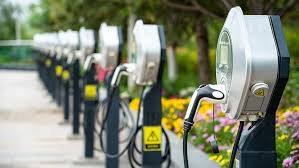In 2024, the electric vehicle (EV) revolution is not just about the cars themselves but the essential infrastructure enabling their widespread adoption. Recent reports by Reuters Mobility highlight that the global EV charging network is expected to expand by 25% this year alone. This shift underscores a transformative phase for urban mobility. In this article, we will explore how EV charging networks are reshaping cities, driving sustainability, and what this means for urban commuters in the years ahead.
The Rise of EV Charging Networks: A Global Perspective
Expanding Infrastructure: A Catalyst for Change
The expansion of EV charging networks is crucial for the transition to sustainable urban transport. According to Bloomberg Green, major cities across the globe are investing heavily in charging infrastructure, with Europe leading the charge. For instance, the EU has committed to installing over 1 million public charging points by the end of 2024. This development is critical for:
- Reducing range anxiety among urban drivers
- Supporting the growing number of EVs on the road
- Encouraging the adoption of electric vehicles in urban areas
Technological Innovations Driving Growth
Technological advancements play a significant role in the expansion and efficiency of EV charging networks. Recent innovations include:
- Fast Charging Stations: These can charge an EV to 80% in under 30 minutes, making them ideal for urban settings.
- Wireless Charging: As reported by TechCrunch, wireless charging pads are being tested in cities like Oslo, offering a seamless charging experience.
- Smart Grids: Smart grids integrate renewable energy sources, optimizing energy distribution and reducing dependency on fossil fuels.
The Role of Major Brands
Leading automakers are pivotal in driving the expansion of charging networks. Companies like Tesla, Volkswagen, and Hyundai are setting up proprietary charging stations to support their vehicles, further enhancing accessibility and convenience for EV users.
Urban Mobility: A Greener, Smarter Future
Sustainable Transportation Solutions
EV charging networks are not just about convenience; they are integral to sustainable urban mobility. InsideEVs highlights several key benefits:
- Reduced Emissions: Cities with comprehensive charging networks see a significant drop in carbon emissions, contributing to cleaner air and healthier populations.
- Energy Efficiency: EVs are more energy-efficient compared to traditional vehicles, and with renewable energy-powered charging stations, the environmental impact is minimized.
Urban Planning and Policy
City planners are integrating EV charging stations into new urban developments. This integration ensures that charging infrastructure becomes a standard feature of urban living, akin to water and electricity. Policies supporting this include:
- Incentives for Developers: Governments offer tax breaks and subsidies to developers incorporating EV infrastructure.
- Zoning Requirements: New commercial and residential buildings must include EV charging infrastructure.
Challenges and Solutions
Despite these advancements, challenges remain. The IEA notes that the demand for raw materials such as lithium and cobalt for batteries is increasing. Potential solutions include:
- Recycling Programs: Encouraging battery recycling to mitigate resource scarcity.
- Alternative Materials: Research into alternative battery technologies that reduce reliance on scarce materials.
Practical Tips for Urban EV Users
How to Efficiently Use EV Charging Stations
For urban EV owners, knowing how and where to charge can optimize their experience. Here are some tips:
- Plan Your Route: Use apps like PlugShare to locate charging stations along your route.
- Peak vs. Off-Peak Charging: Charge during off-peak hours to save money and reduce strain on the grid.
- Keep an Emergency Charger: A portable charger can be invaluable in areas with sparse charging options.
Where to Buy and What to Compare
When considering an EV, it’s crucial to compare models based on charging compatibility and efficiency. Popular models in 2024 include:
- Tesla Model Y: Known for its extensive Supercharger network.
- Hyundai Ioniq 5: Offers rapid charging and compatibility with various charging standards.
- Ford Mustang Mach-E: Provides access to the FordPass Charging Network, ensuring widespread coverage.
Conclusion: The Road Ahead
As we head further into 2024, EV charging networks are set to redefine urban mobility. These networks not only facilitate the adoption of electric vehicles but also play a crucial role in creating sustainable, efficient, and livable urban environments. For city dwellers, the integration of charging infrastructure represents a significant step towards cleaner air and reduced dependence on fossil fuels.
Are you ready to join the EV revolution and contribute to a sustainable future? Share your thoughts and experiences with us in the comments below. As cities continue to evolve, the future of urban mobility looks electric, connected, and sustainable. Let’s drive change together!

